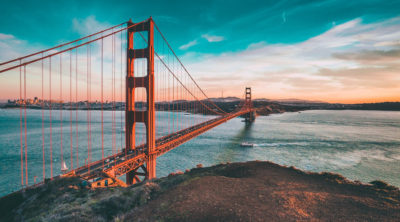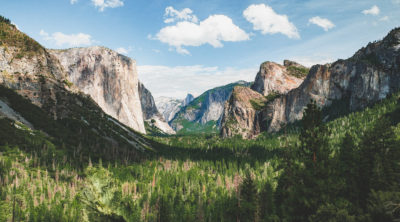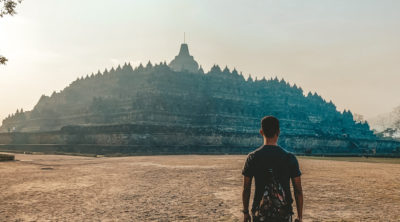
Situated in the financial hub of India, is the country’s most famous hotel―The Taj Mahal Palace Hotel. In this article, we’ll read about its history, and learn several interesting facts that make this hotel globally noted.
Guest List or What!
This hotel has been a host to the Prince of Wales, King and Queen of Norway, Muhammad Ali Jinnah, Sarojini Naidu, Bill Clinton, Jacqueline Kennedy Onassis, and Jacques René Chirac. Artists such as Mick Jagger, The Beatles, and Elvis Presley have also stayed here.
History
Mr. Jamsetji Tata wanted to build a grand hotel that would help in rebuilding Mumbai’s global image. Eight years later, the foundation of this hotel was laid. Staying true to his vision, Mr. Tata completed the construction in 1903, and opened the hotel to guests on 16th December, in the same year. This hotel is what you today know as the Taj Mahal Palace Hotel. After completion, it immediately became a favorite of the royals, with many princes opting to stay here, given the hotel’s luxurious comforts, which was then absent in the city. In later years, as we have already seen, many world leaders and royals called this hotel their home, even if it was just for a day.
Facts about The Taj Mahal Palace Hotel
- The Taj Mahal Palace Hotel is a five-star hotel, located next to the Gateway of India, a structure built to commemorate the landing of their Majesties King George V and Queen Mary in 1911.
- The hotel has 565 rooms, 46 suites, and 11 restaurants. The first 24-hour coffee shop in India was opened in this hotel in 1972. India’s first authentic Sichuan restaurant, the Golden Dragon, was opened in this hotel. It was also the first to hire English butlers.
- The hotel also opened the city’s first licensed bar. It also opened the country’s first international discotheque―Blow Up.
- Architects Sitaram Khanderao Vaidya and D. N. Mirza planned this marvelous hotel, though, it was completed by W.A. Chambers, an English engineer. The hotel was built by Khansaheb Sorabji Ruttonji Contractor; he was also responsible for designing and building the renowned central floating staircase.
- The architecture of the hotel was planned in an Indo-Saracenic style, as instructed by Jamsetji Tata. The nearby Gateway of India is also built in the same style.
- The cost of building this majestic hotel was GBP 250,000 in 1903, which is approximately GBP 127 million (as of 2008).
- The hotel was converted into a six hundred-bed hospital during World War I.
- In 1973, the Tower was added to The Taj Mahal Palace, and the hotel was since then called the Taj Mahal Palace & Tower. This architecturally-different tower was designed by famous American architect Melton Bekker; the interiors were done by Hong Kong-based Swiss designer Dale Keller.
- The Tower was built in place of Green’s Hotel, a hotel that was infamous for its wild parties and low prices. The hotel was completely demolished to make place for the tower.
- The Taj Mahal Palace Hotel was the first hotel in India to have electricity.
- Since the Gateway of India was built 20 years later, the Taj Palace was the first marker of Bombay Harbor; it was so for more than 50 years.
- The hotel was the first in the country to have American fans, German elevators, and Turkish baths.
Recent Awards
- Best Hotel Restaurant (Wasabi by Morimoto) – T+L India’s Best Awards 2013.
- Featured on the list of T+L Top 500 Best Hotels in the world. (Jan 2013)
- Best Business Hotel in India, Conde Nast Traveller India Readers’ Choice Awards – 1st Runner’s Up. (Nov 2012)
- List of Overseas Business Hotels at the Conde Nast Traveller UK Readers’ Travel Awards – 3rd. (Oct 2012)
- Conde Nast Traveler USA Readers’ Choice Awards 2012 list of Top 10 Hotels in India – 9th.
- Best Hi-End Luxury Facility Hotel, Today’s Traveller Award 2012. (July 2012)
- Top City Hotel in Asia – Travel & Leisure World’s Best Awards 2012. (July 2012)
Terrorist Attacks
On 26 November 2008, the hotel was attacked by a group of terrorists, along with the nearby Oberoi Trident Hotel. Many people were taken hostage; 31 died at the hotel. Parts of the hotel were heavily destroyed, specially the hotel’s roof and heritage section. Approximately 450 people were staying at the hotel at the time of this incident. It took more than 12 months for all the restoration work to be completed. Sections that weren’t heavily damaged opened on 21 December 2008, while the ones that were, opened on 15 August 2010―the Indian Independence Day. Restoration cost an estimated USD 40 million. Barack Obama was the first foreign head of state to stay at the hotel after the restoration. In a speech from its roof, he said, “The Taj has been the symbol of the strength and the resilience of the Indian people.”
In spite of the terror attacks, this magnificent heritage building stands proudly amidst the debris of the devastation on the shores of the Arabian Sea. It would forever remain as an iconic landmark of India.



